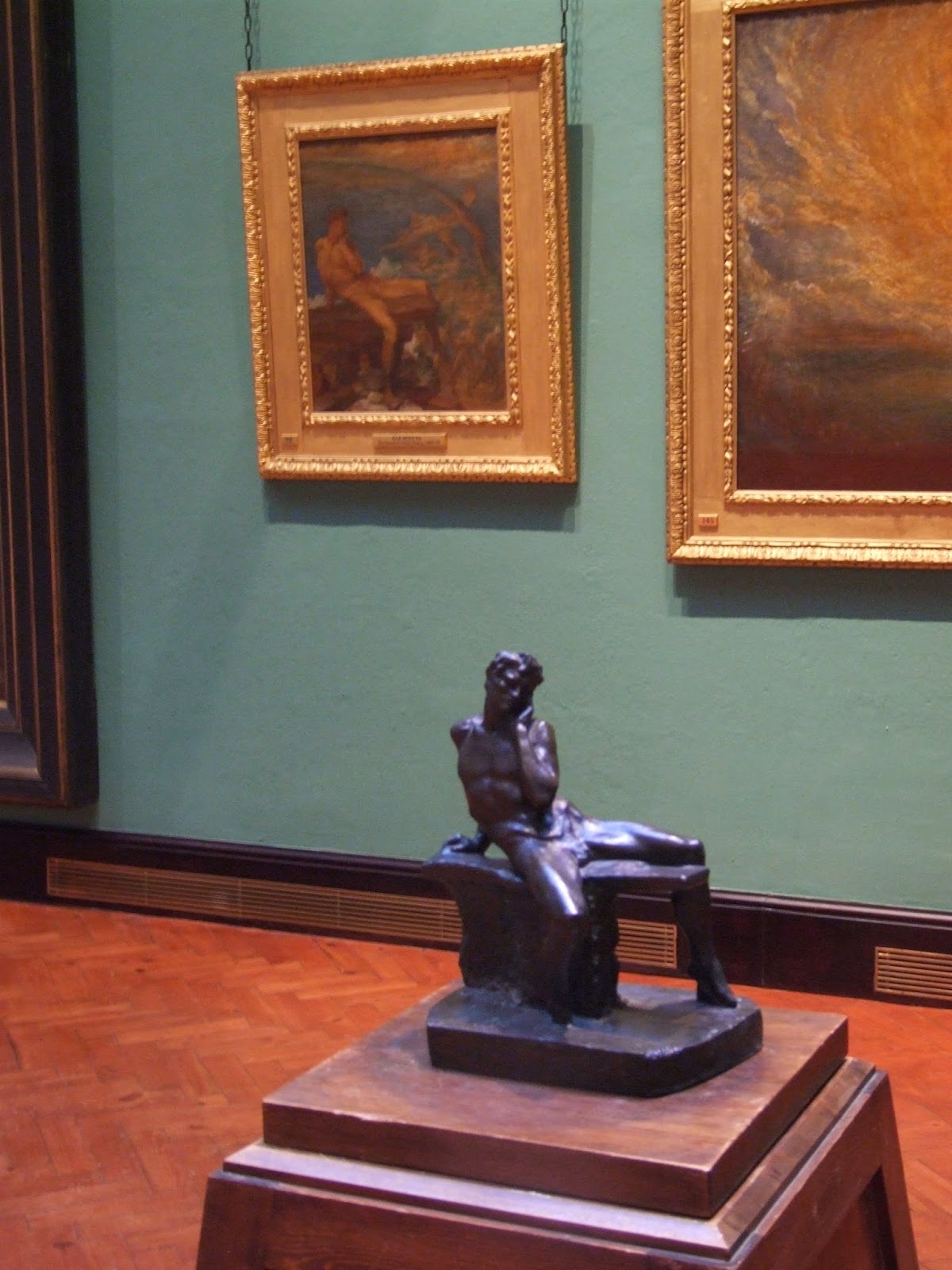Day 1 (24/5/14)
Setting up.
Jordan recommended spending a long-time setting up and even to include this into the cost of your model-cost considerations. The panel was primed birch plywood. Discussing this choice later inspired an interesting and lengthy (and very nerdy) conversation about materials and the longevity of paintings.
"Lower your expectations, please!"
Beginning of the block-in.
During the block-in stage Jordan discussed the various online sources for quality information on materials, and artists who are worth reading or listening to about the subject. These included the suggested donation podcast, Ralph Meyer of course, Ted Minoff, George O'Hanlon of natural pigments and the National Gallery bulletin amongst others. The artist Dan Thompson also came up in reference to drawing.
Further progress in the block-in
"Draw first - measure second." A comment I found valuable.
Some white beginning to be added to the block-in.
The attendees were very keen to ask about the choice of colours used once they were added to the palette. The white was a lead white from Natural Pigments. Jordan used this to both begin on a skin-tone and to correct and refine drawing. Drawing at this stage was kept abstract.
Beginning of the colour-value block-in.
Working from the middle values out to the darker and lighter ones.
Hog bristle brushes can be used to cover large areas quickly. Mongoose bristle brushes were also cited as a further choice for their delicate yet stiff quality.
The 5 colour-value palette for colour block-in.
Amongst others Holbein Vermillion and Williamsburg Cadmium Red Vermilion were used.
The end of the first day's work
Another portrait Jordan had brought to show as part of the demo.
Again, unfortunately a lot of the colours, shapes and edges are lost in the photograph.________________________________________________________________________________
Day 2 (25/5/14)
A retouch varnish can be applied to a dry-to-the-touch painting in order to begin working on it again. The shapes are worked on taking them from an abstract, or perceptual, to a more conceptual form - meaning the shapes - as they are understood as well as are observed - are considered in design. In going towards this more conceptual design the advice was given to draw what you see - not what you know - but know what to look for.
In the discussion on painting Jordan mentioned a quote from Philip Guston which reads "When you're in the studio painting, there are a lot of people in there with you - your teachers, friends, painters from history, critics... and one by one if you're really painting, they walk out. And if you're really painting YOU walk out."
Some pinks and purples and greys are not as apparent in this photograph as they were in the actual painting unfortunately.
Final result on Day 2
(Thanks to Stephanie for these pics!)
detail




























































